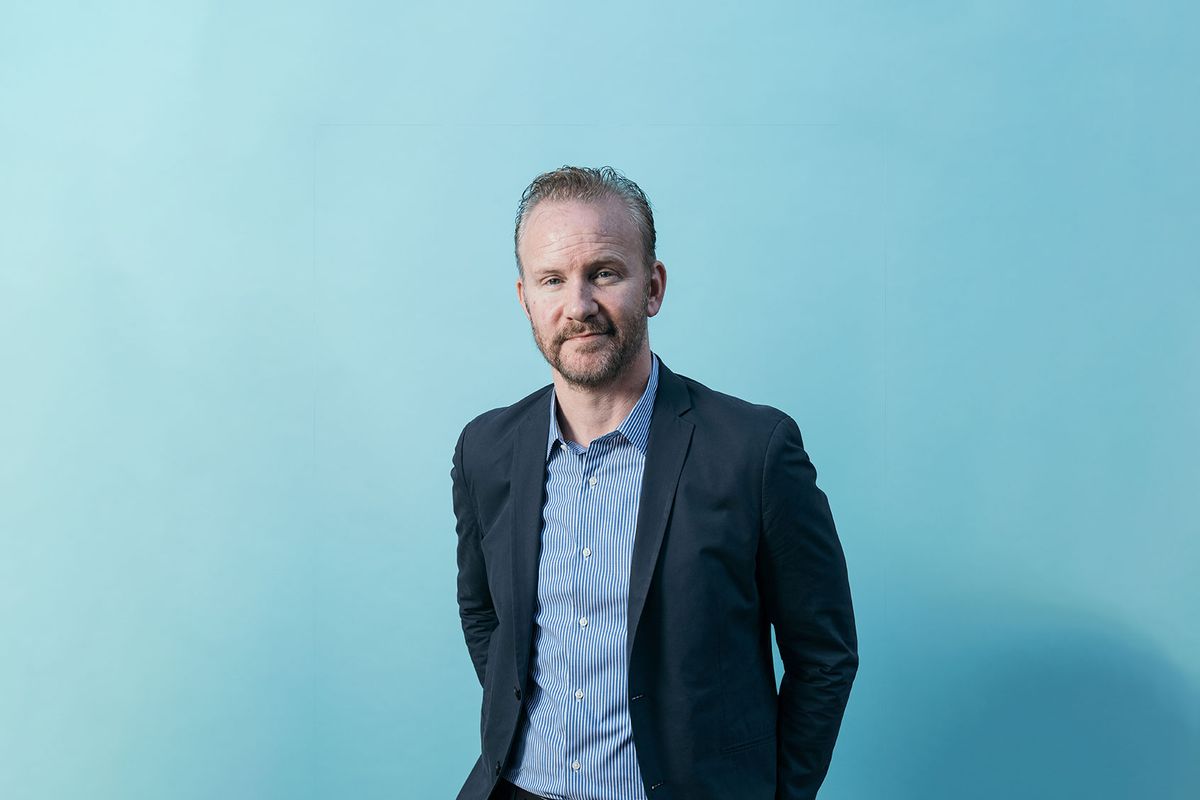Morgan Spurlock’s Diagnosis: Morgan Spurlock Kind Of Cancer

Morgan Spurlock, an American documentary filmmaker, was diagnosed with testicular cancer in 2006. Testicular cancer is a type of cancer that develops in the testicles, the male reproductive organs responsible for producing sperm.
Symptoms and Health Issues
Spurlock initially experienced symptoms such as a lump in his left testicle, which he noticed during a self-examination. Other symptoms may include pain or discomfort in the testicles, swelling or enlargement of the testicles, and a feeling of heaviness or pressure in the scrotum.
Treatment Plan and Recovery
Upon diagnosis, Spurlock underwent surgery to remove the affected testicle. Following surgery, he received chemotherapy to reduce the risk of cancer recurrence. Spurlock’s treatment was successful, and he has been cancer-free since his diagnosis.
Causes and Risk Factors
Morgan spurlock kind of cancer – Morgan Spurlock’s type of cancer, penile cancer, is a rare disease with a complex etiology. Various factors, including lifestyle choices, environmental exposures, and genetic predispositions, may contribute to its development.
Lifestyle and Diet
Certain lifestyle factors and dietary habits have been linked to an increased risk of penile cancer. These include:
- Smoking: Cigarette smoking is a significant risk factor for penile cancer, as it releases harmful chemicals that can damage DNA and promote cancer cell growth.
- Poor hygiene: Inadequate genital hygiene can create an environment conducive to bacterial growth and infection, which may increase the risk of penile cancer.
- Diet low in fruits and vegetables: A diet deficient in fruits and vegetables may reduce the intake of antioxidants and other protective compounds that can help neutralize free radicals and prevent cell damage.
Environmental Factors
Exposure to certain environmental factors has also been associated with an elevated risk of penile cancer:
- Human papillomavirus (HPV): HPV is a sexually transmitted infection that is a major risk factor for penile cancer. Some strains of HPV can cause persistent infections that can lead to the development of precancerous and cancerous lesions.
- Ultraviolet radiation: Excessive exposure to ultraviolet (UV) radiation from the sun or tanning beds can damage the skin and increase the risk of skin cancers, including penile cancer.
Preventive Measures and Screening
While not all risk factors for penile cancer can be eliminated, adopting certain preventive measures and undergoing regular screenings can help reduce the risk of developing the disease:
- Quit smoking: Quitting smoking is the most effective way to reduce the risk of penile cancer and other smoking-related diseases.
- Practice good hygiene: Maintain proper genital hygiene to prevent infections and irritation.
- Get vaccinated against HPV: HPV vaccination is recommended for both males and females to protect against HPV-related cancers, including penile cancer.
- Limit UV exposure: Reduce exposure to UV radiation by using sunscreen, wearing protective clothing, and avoiding prolonged sun exposure during peak hours.
- Regular screenings: Men at high risk for penile cancer should consider regular screenings to detect and treat precancerous lesions early.
Treatment Options
Morgan Spurlock’s diagnosis of testicular cancer presents him with various treatment options, each with its own benefits, risks, and potential side effects. The primary treatment approaches include surgery, chemotherapy, and radiation therapy.
Surgery
Surgical intervention is often the first line of treatment for testicular cancer. The main surgical procedure involves removing the affected testicle, known as an orchiectomy. This is typically followed by additional surgery to remove any remaining cancerous tissue or lymph nodes in the surrounding area. Surgery is generally effective in removing the primary tumor and preventing its spread. However, it may carry risks such as infection, bleeding, and damage to surrounding nerves or blood vessels.
Chemotherapy
Chemotherapy involves using powerful drugs to kill cancer cells throughout the body. It is often used in combination with surgery to eliminate any remaining cancer cells or to treat cancer that has spread to other parts of the body. Chemotherapy can be administered intravenously or orally, and the specific drugs used will depend on the stage and type of cancer. While chemotherapy can be effective in treating cancer, it can also cause side effects such as nausea, vomiting, hair loss, and fatigue.
Radiation Therapy
Radiation therapy uses high-energy beams to target and destroy cancer cells. It is often used after surgery to reduce the risk of cancer recurrence or to treat cancer that has spread to other areas. Radiation therapy can be administered externally, using a machine that directs radiation beams at the affected area, or internally, using radioactive implants placed near the tumor. Radiation therapy can be effective in killing cancer cells, but it can also cause side effects such as skin irritation, fatigue, and damage to surrounding tissues.
Impact on Health and Lifestyle

Morgan Spurlock’s cancer diagnosis had a profound impact on his health and well-being. The physical effects of the disease included fatigue, nausea, hair loss, and weight loss. He also experienced emotional distress, including anxiety, depression, and fear.
Physical Impact, Morgan spurlock kind of cancer
- Fatigue: Spurlock experienced extreme fatigue, making it difficult to perform daily activities.
- Nausea: He suffered from persistent nausea, which interfered with his appetite and ability to eat.
- Hair loss: Chemotherapy caused Spurlock to lose his hair, which was a significant emotional challenge.
- Weight loss: The combination of nausea and fatigue led to significant weight loss.
Emotional Impact
- Anxiety: Spurlock experienced intense anxiety about his health and the future.
- Depression: The diagnosis and treatment process triggered feelings of depression and hopelessness.
- Fear: Spurlock lived with the constant fear of the cancer returning or spreading.
Lifestyle Changes
Spurlock’s diagnosis forced him to make significant lifestyle changes. He had to adjust his work schedule to accommodate treatment and recovery. He also had to adopt a healthier diet and exercise routine to support his immune system.
Career Impact
Spurlock’s career was put on hold during his treatment. He was unable to travel or participate in promotional events for his films. However, he used his experience to raise awareness about cancer and inspire others facing similar challenges.
Relationships
Spurlock’s diagnosis and treatment had a significant impact on his relationships. He relied heavily on the support of his family and friends. He also found comfort in connecting with other cancer survivors.
Coping Mechanisms
Spurlock used a variety of coping mechanisms to manage the challenges of cancer. He practiced mindfulness meditation to reduce stress and anxiety. He also engaged in creative activities, such as writing and painting, as a way to express his emotions and find solace.
Advocacy and Awareness
Morgan Spurlock has been a vocal advocate for cancer awareness and support. He has leveraged his platform and personal experience to raise awareness about the disease, educate the public, support research, and provide resources to cancer patients.
Through his documentaries, public speaking engagements, and social media campaigns, Spurlock has shared his own cancer journey and highlighted the challenges faced by cancer patients and their families. He has also worked closely with cancer organizations, such as the American Cancer Society and Stand Up To Cancer, to support research and patient support programs.
Initiatives
Spurlock’s advocacy efforts have included:
- Producing the documentary “The Cancer Industrial Complex,” which examined the role of industry and profits in cancer treatment.
- Launching the “Spurlock Cancer Challenge,” an initiative that encouraged people to get screened for cancer and raise funds for research.
- Partnering with the American Cancer Society to create a public service announcement campaign about cancer prevention and early detection.
These initiatives have helped to increase public awareness about cancer, reduce stigma, and provide support to cancer patients and their families.
Impact
Spurlock’s advocacy work has had a significant impact on cancer awareness and patient support. His documentaries have reached millions of people and helped to educate the public about the disease. His fundraising efforts have supported research and patient support programs, leading to improved treatments and better outcomes for cancer patients.
Spurlock’s advocacy has also helped to raise awareness about the importance of early detection and prevention. By sharing his own story and highlighting the challenges faced by cancer patients, he has encouraged people to take action to reduce their risk of cancer and get screened regularly.
Research and Advancements

The field of oncology is constantly evolving, with new research and advancements emerging regularly. These advancements are leading to improved treatments and better outcomes for patients with Morgan Spurlock’s type of cancer.
One of the most promising areas of research is in the development of targeted therapies. These therapies are designed to specifically target the molecular abnormalities that drive cancer growth. This approach is more effective and has fewer side effects than traditional chemotherapy.
Clinical Trials
Clinical trials are an essential part of the cancer research process. These trials allow researchers to test new treatments and evaluate their safety and effectiveness. Many clinical trials are currently underway for Morgan Spurlock’s type of cancer, and these trials are helping to improve the outlook for patients.
Promising Breakthroughs
Several promising breakthroughs have been made in the treatment of Morgan Spurlock’s type of cancer in recent years. These breakthroughs include the development of new immunotherapy drugs, which harness the power of the patient’s own immune system to fight cancer.
These advancements are having a significant impact on the lives of patients with Morgan Spurlock’s type of cancer. They are improving patient outcomes, reducing side effects, and giving patients more hope for the future.